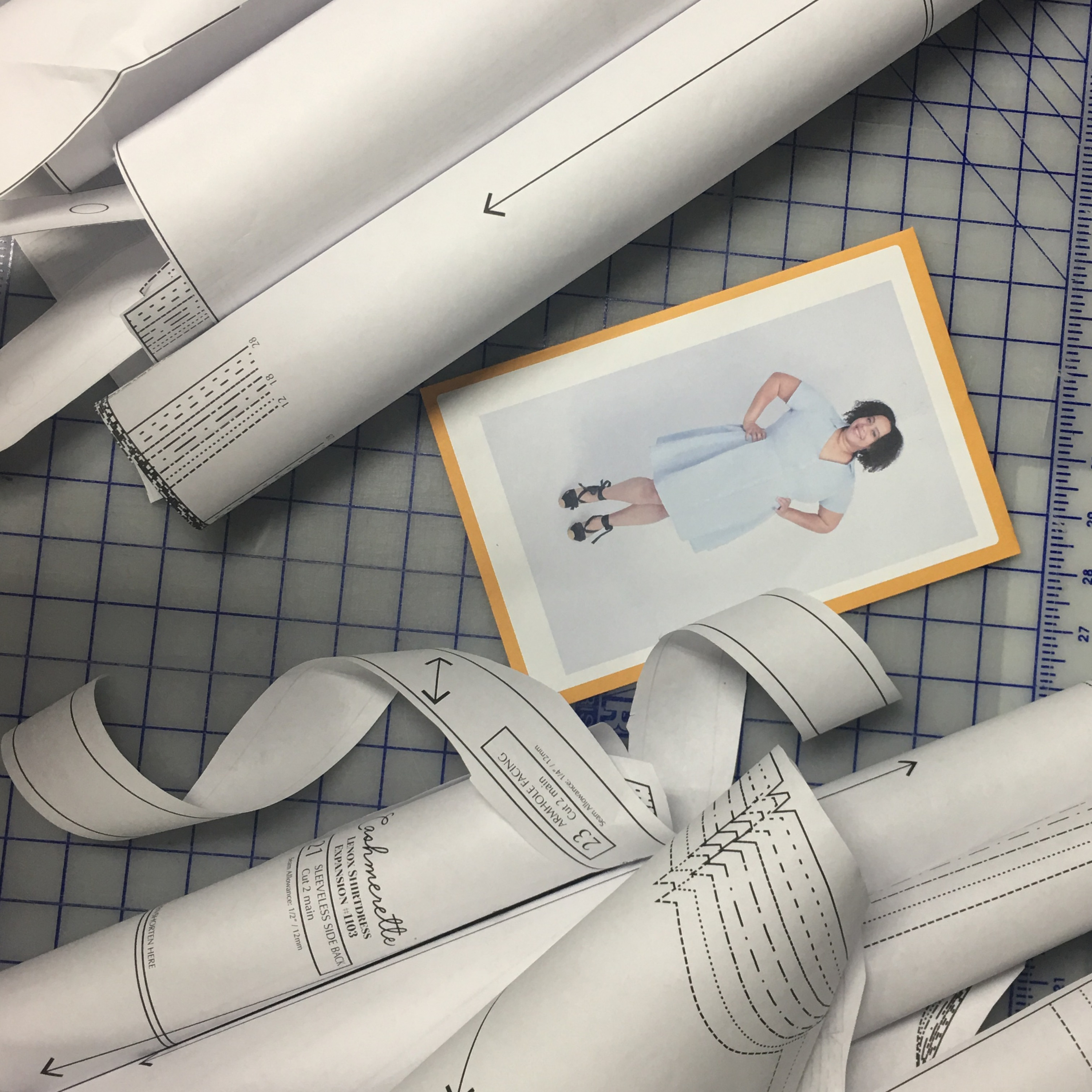Join the Black Women Stitch Patreon
Black Women Stitch 2023 Wall Calendar
Simone Elizabeth Saunders
Simone Elizabeth Saunders (b. 1983, Calgary, Canada) is a textile artist who focuses primarily on punch-needle and tufting tapestries to create allegorical narratives of Blackness and Womanhood using polychrome and textural portraits. Based in Mohkinstsis, Canada, she holds a B.F.A. with Distinction from the Alberta University of Arts in 2020 and a background in the theater arts, with a previous B.F.A. from the University of Alberta’s Acting Conservatory.
Saunders’ practice is anchored in a process that starts with collages or sketches that are then transferred to large-scale frames. From there, they are tufted using a myriad of yarn colors. Saunders’ artistic process represents a performative negotiation of weaving and coloring at the same time. This results in detailed portraits that capture nuanced individuality. Recent international exhibitions include the Textile Museum of Canada, Contemporary Calgary, Minneapolis Art Institute (Minnesota), the Mint Museum (North Carolina), and Arts Westchester (NY), among other international museums and prominent collectors.
Lisa Woolfork
Lisa Woolfork is an associate professor of English specializing in African American literature and culture. Her teaching and research explore Black women writers, Black identity, trauma theory, and American slavery. She is the founder of Black Women Stitch, the sewing group where Black lives matter. She is also the host/producer of Stitch Please, a weekly audio podcast that centers Black women, girls, and femmes in sewing. In the summer of 2017, she actively resisted the white supremacist marches in her community, Charlottesville Virginia. The city became a symbol of lethal resurging white supremacist violence. She remains active in a variety of university and community initiatives, including the Community Engaged Scholars program. She believes in the power of creative liberation.
Insights from this episode:
- Details on Unearthing Unicorns
- How Simone finds a reflection on Black women in the past
- What it means to create a tapestry
- How Simone honors those who came before her
- The process of Simone’s art
- Showcasing her work at the Claire Oliver Gallery
- How is crafting work in a group
Quotes from the show:
- “The Unicorn to me represents everything dazzling and magical, and all dreams come true and really the purity of what it is to be human and shine your light” —Simone Elizabeth Saunders in “Stitch Please”
- “It is very interesting for me, when I’m in the process, I allow for a huge sense of spirituality and honoring those who came before me” —Simone Elizabeth Saunders in “Stitch Please”
- “The coming together and the nesting of threads to me is also such a spiritual connotation of our history and of me reaching out to this sisterhood” —Simone Elizabeth Saunders in “Stitch Please”
- “I think that one of the reasons that your work has exploded in these last few years with the BLM movement is because people have started to realize that BLM is more than a call for equity and justice with policing (...) it’s also a call to existing in the fullness of ourselves” —Lisa Woolfork in “Stitch Please”
- “It’s all about the sisterhood: honoring our ancestors, those who came before us, those who are her now, those who are yet to come, it’s that connectivity” —Simone Elizabeth Saunders in “Stitch Please”
- “I do think of all my works as extensions of and extensions of yours to be shared” —Simone Elizabeth Saunders in “Stitch Please”
- “Be inspired by what inspires you, not what you think that you should be putting out in the world, because everyone's voice is unique and you deserve to be heard” —Simone Elizabeth Saunders in “Stitch Please”
Stay Connected:
Lisa Woolfork
Instagram: Lisa Woolfork
Twitter: Lisa Woolfork
Simone Elizabeth Saunders
Website: Contemporary Calgary
Instagram: Simone Elizabeth Saunders
This episode was produced and managed by Podcast Laundry.
Sign up for the Black Women Stitch quarterly newsletter
Check out our merch here
Leave a BACKSTITCH message and tell us about your favorite episode.
Join the Black Women Stitch Patreon
Check out our Amazon Store
Stay Connected:
YouTube: Black Women Stitch
Instagram: Black Women Stitch
Facebook: Stitch Please Podcast


